2025 Rivian R1T and R1S First Drive: Under-the-skin changes reap rewards

SEATTLE — On Nov. 26, 2018, Rivian — a company almost no one had heard of — shocked the L.A. Auto Show audience with the battery-electric R1T pickup. The claims were 400 miles of range or more, a 3-second 0-60 time and 11,000 pounds of towing capacity. The next day, Rivian did the same with its R1S. Now, that same company is introducing its first round of updates to its flagship models with the 2025 Rivian R1T and R1S.
Remember, the only battery-electric vehicles with more than 200 miles of range in 2018 were Tesla products or the Chevrolet Bolt. A full-size pickup and SUV with real room and traditional interfaces was outlandish.
And huzzah, the hype was real, even when we finally drove the pickup three years later. In 2021, we crowed, “The R1T has us utterly convinced that electric off-roading is the way to go.” In our R1S First Drive in 2022, we said, “The SUV version of Rivian’s off-roading electric vehicle is just as impressive as the truck.”
A line from each of those reviews speaks to what Rivian’s done with the refreshed R1T and R1S. In our R1T piece, that line was, “Overall, it’s hard not to be excited about the Rivian R1T’s fundamentals after spending a long day pushing it on all kinds of terrain.” About the R1S, it was, “While the cost for a 2022 Rivian R1S is high, the range, capability, comfort and space are worth it, especially if you’re looking for a vehicle from a company that appears to be really trying to both offer unique, thoughtful, functional features in the all-electric space, and inspire people to have more adventures both on and off the beaten path.”
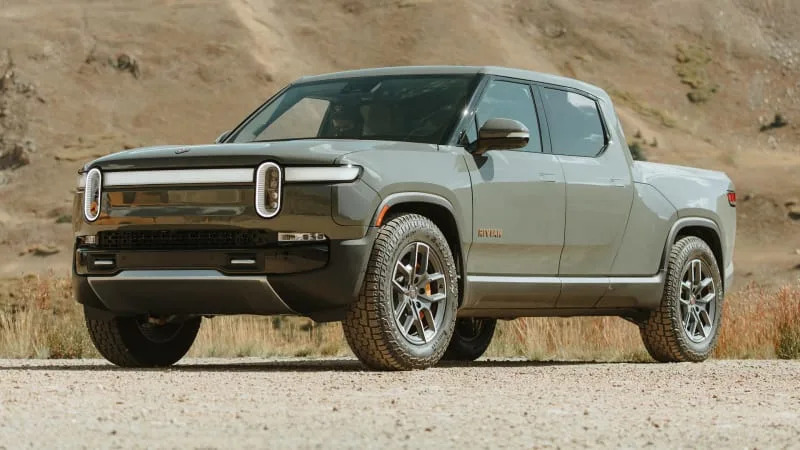
You could wager some passerby of an R1T bed full of groceries to spot three differences between the pre- and post-refresh models; you’d win against anyone but an owner or brand fan (comparison above, refreshed model on the left). The 2025 R1 models are all about fundamentals and thoughtfulness born of simplification under the skin. Overhauling more than 60% of the software and hardware components underbody has saved space and weight, can make repairs easier and less costly, and will help Rivian achieve its target of a full-year profit.
Engineers rebuilt the R1 models’ electrical architecture. A new circuit board bearing Nvidia Drive Orin chips operates at 10 times the previous processing speed, now capable of 250 trillion operations per second. The 17 ECUs in the first-gen R1 models have been culled to seven. A new zone-based electrical architecture localizes tasks into east, west and south zones, enabling quicker response times. The streamlining eliminated 44 pounds of wiring.
Deeper processing power plus quicker reaction times plus new AI-based vision software make better use of the upgraded sensor suite of 11 cameras with eight times the resolution in megapixels compared to Rivian’s Gen 1 R1 cameras, as well as five radar units. Efficiency gains also reduce draw; we were told that the Gear Guard sentry system now burns through just a single mile of range in 24 hours.
Starting with the battery pack, there are three sizes, all served by a new heat pump. The base Standard pack is now a lithium-ion phosphate chemistry that gets up to an estimated 270 miles of range. This is a less expensive pack to produce, but it powers the same range as the previous Standard battery.
The Large and Max packs are reengineered. The Samsung-SDI 2170 cells are the same size as before, but pack three grams more lithium apiece, translating into more energy: 5.3 amp-hours per cell vs 5.0 Ah previously. Gen 2 pack modules are smaller thanks to refined components like the chill plate between the cell stacks, while the switch to die-casting for the pack enclosure reduces mass and cost.
Service and repairability benefits to owners improve with other changes. The high-voltage distribution box (HVDB), which acts as a hub for disbursing pack energy, is now a single unit instead of two, and can be replaced on its own instead of being integral to the pack housing. This advance lowers the cost to manufacture as well as the cost of repair and replacement.
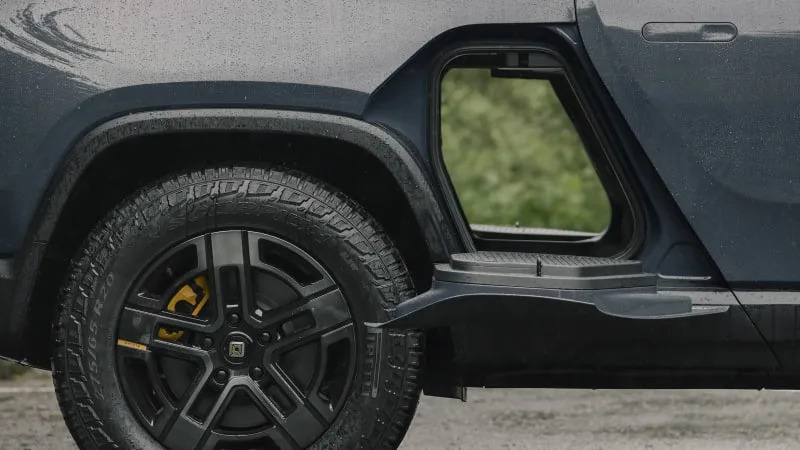
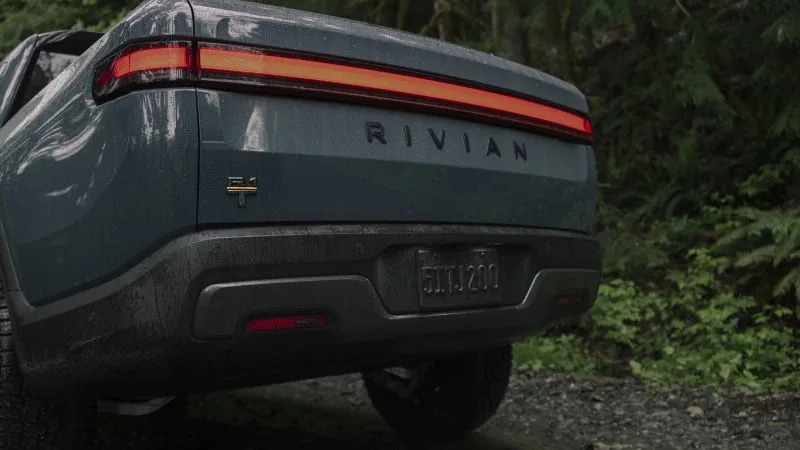
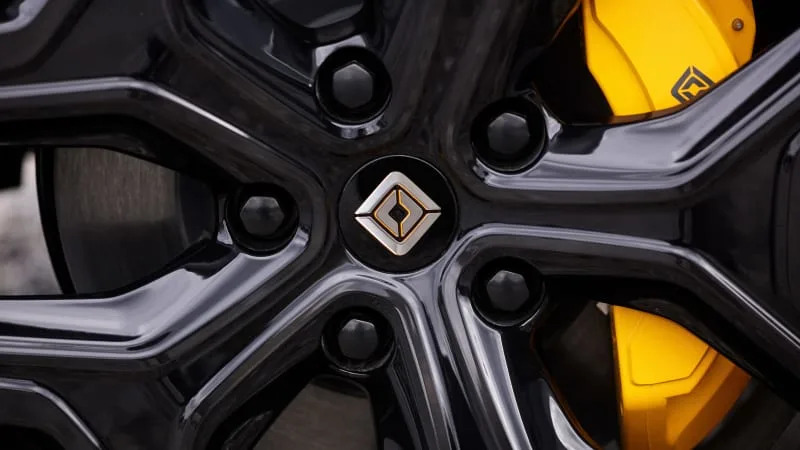

Even though launch trims are on sale now, Rivian wouldn’t get into pack capacities because engineers are still fine-tuning. The Large pack is rated to go an estimated 330 miles, the Max pack gets an estimated 410 miles on the R1S and 420 miles in the R1T. Max charging rates are 200 kW for the new Standard pack and 220 kW for the Large and Max packs. A suitably powered charger can replenish up to 140 miles of range in as little as 20 minutes.
These ranges are achieved without a Conserve Mode (it has been eliminated for 2025), but with a new 22-inch aero wheel. On the Gen 1 vehicles, this mode detached the rear axle shafts, turning an R1 into a front-driver. Another benefit of the snappier electrical architecture and in-house motors is on-demand all-wheel drive in the default All-Purpose driving mode. Biased toward the front, the rear axle shafts hook up seamlessly in a fraction of a second.
Five wheel and tire packages remain on the menu. However, the new standard wheel is a 20-incher on a Goodyear Wrangler tire; the 21-inch option was 86’ed. The new aero wheel on a Pirelli Scorpion MS tire is quite the looker and lowers the drag coefficient of the R1T to its lowest level yet at 0.297. Even better, those who aren’t in love with the aero aspect can remove the cover to reveal a good-looking spoked wheel. The remaining three choices are two 22-inch wheels on 34-inch Pirelli rubber for the All-Terrain Package, and a performance 22-inch wheel on Michelin Pilot Sport 5 S tires reserved for the Quad-Motor.
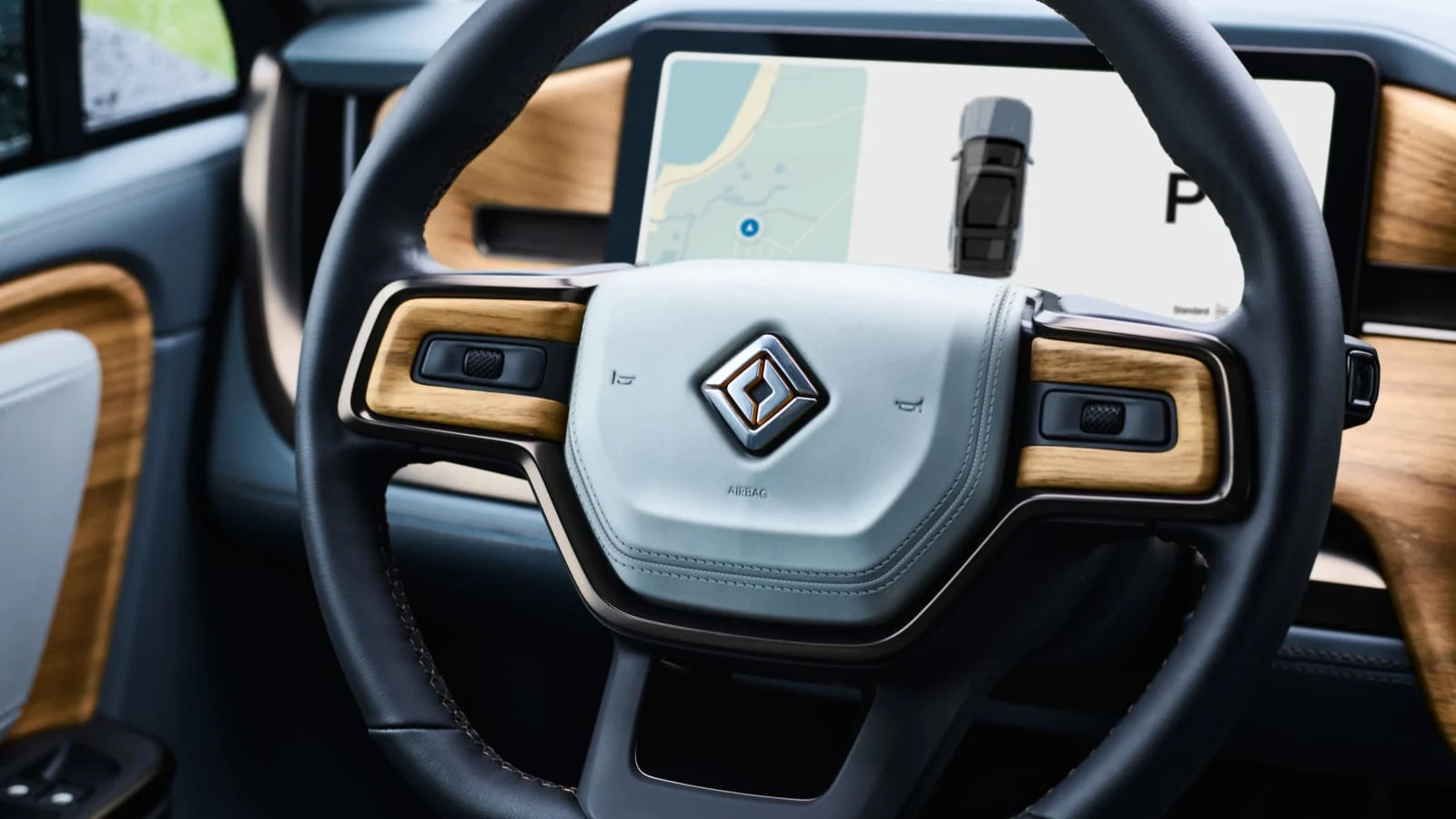
Rivian has added a Tri-Motor trim with a single front motor and dual rear motors. The front axle motors on the Dual- and Tri-Motor variants carry over. The rear units on the Tri- and Quad-Motor variants are a new in-house design – every motor on every trim is built on Rivian’s lines.
The standard Dual-Motor powertrain makes 553 horsepower and 610 pound-feet of torque, doing the 0-60 dash in a claimed 4.5 seconds. Dual-Motor Performance raises output to 665 hp and 829 lb-ft, same as before, dropping the 0-60 to 3.4 seconds.
The new Tri-Motor step makes a combined 850 hp and 1,103 pound-feet of torque in the new Launch Mode, exclusive to the Tri- and Quad-Motor trims. The output figures compare to 835 hp and 908 lb-ft from the pre-refresh Quad-Motor R1. The three-motor drivetrain uses its blastoff mode to rocket to 60 mph in 2.9 seconds in the R1T, the R1S about a tenth slower.
Inserting that Tri-Motor into the lineup gave engineers an excuse to boost output in the Quad, its e-motors eclipsing four figures at 1,025 hp and 1,198 lb-ft in Launch Mode. Claimed 0-60 drops to less than 2.5 seconds on the Quad’s new Michelin Pilot Sport 5 S tires, clicking off the quarter-mile in a claimed 10.5 seconds. Perhaps even wilder, daily drivers will want to know that scooting from 60 to 80 miles per hour takes a claimed 1.5 seconds — a very easy way to get a ticket.
On top of small cosmetic changes, the broad strokes underneath turn into new features and capabilities for the 2025 range, some tech available now, some coming as updates.
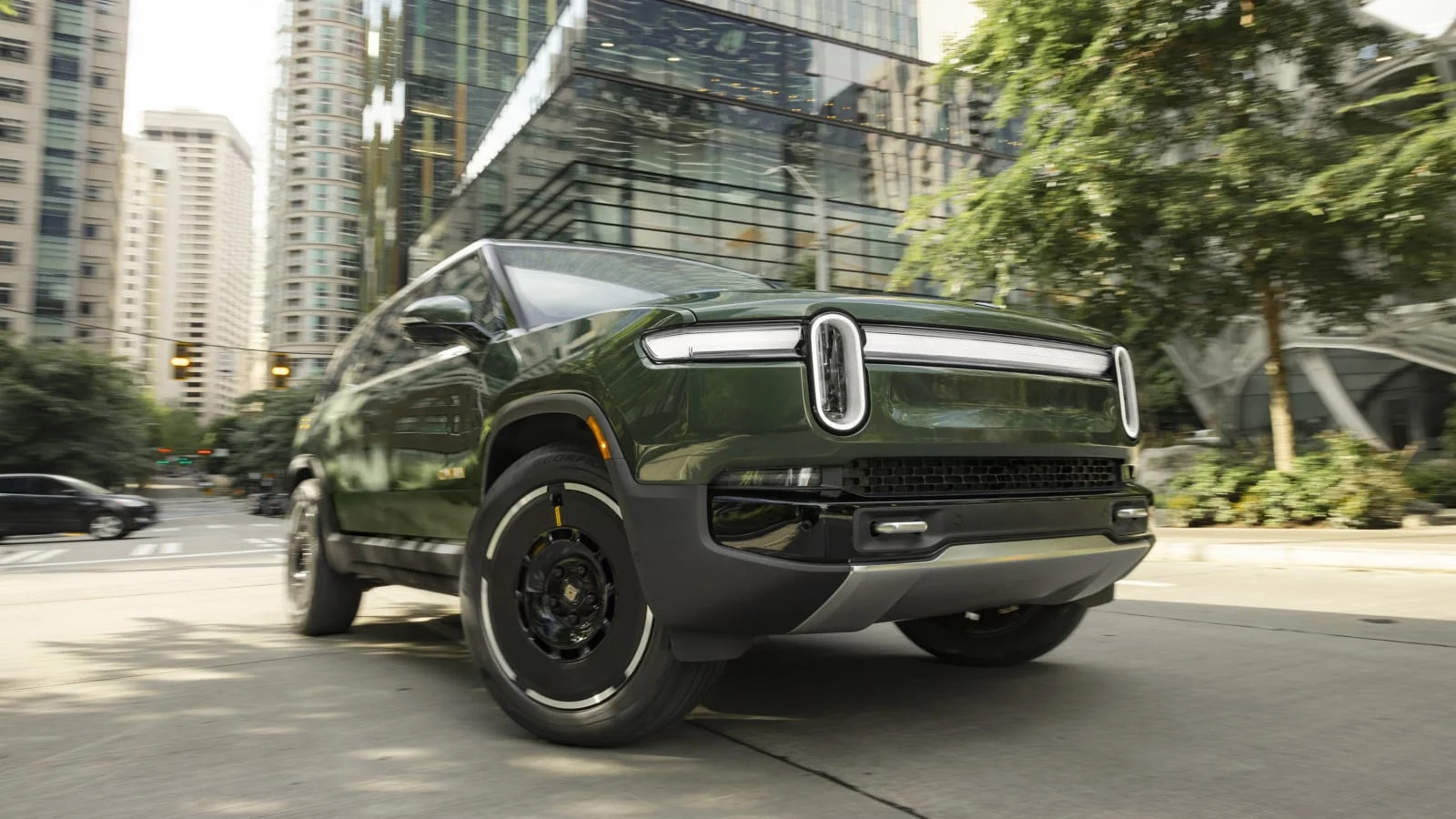
The headlight frames feature a pattern with more dimension. Brighter, adaptive beams eliminated the need for fog lights, so the turn signals are now lower on the front fascia where the fog lights used to be. Adaptive Drive Beam, coming in a software update later this year, changes the headlight beam shape to reduce glare for oncoming drivers.
The bottom third of the illuminated crossbars in front and back are given over to RGB lighting segments. When charging, 10 green segments act as an external charging level meter. Or, if an R1 were immobilized after an accident, yellow light segments can act as directional indicators to other traffic, signaling to pass on the right or the left.


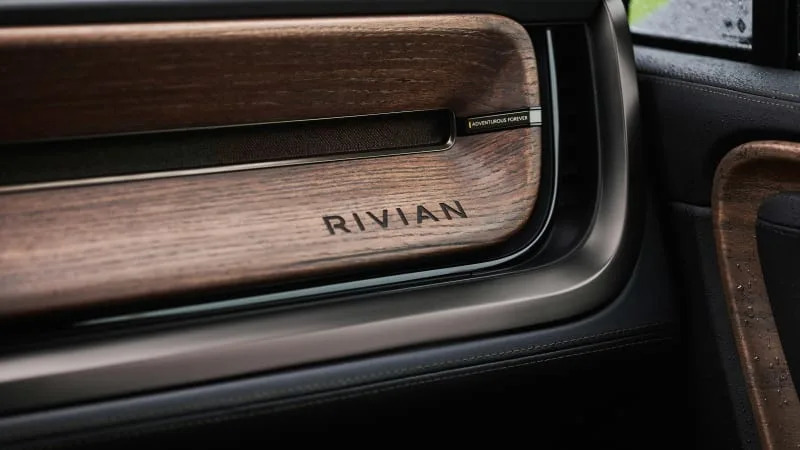
Inside, the infotainment is more responsive, making more use of features available in the Unreal Engine software the system’s built on. New interior lighting themes get names like Forest Valley and Glacier, each theme playing its own specific mood music as you cycle through the options. A small ridge splits the wireless charger at the front of the armrest to restrain one’s phone. Flick the turn signal, and the side camera displays an image of the relevant blind spot on the instrument panel screen.
The interior material is called Adventex. It looks great on the seats, but we do wish Rivian put more effort into making it look as good on the instrument panel topper — more padding and better looking stitching would help. But the cabin fits the brand’s premium declarations, especially the wood trims.
And get Rivian’s Premium Audio. In addition to the standard audio being muddy, Rivian worked with Apple Music to integrate Spatial Audio with Dolby Atmos. This will require a subscription to Rivian Connect+, which costs either $14.99 per month or $149 per year, the sub adding digital perks like Google Cast, which works just like on your connected television, porting media from a device to the vehicle’s infotainment screen, and a hotspot for eight devices.

And at last, the electrochromic roof that Rivian wanted to launch when we first drove the R1S in 2022 is now available, called the Dynamic Glass Roof. No more baking like a casserole unless you want to.
We checked out an R1S for a lengthy drive in Seattle’s wet weather. There was little to complain about before, our primary gripe the SUV’s too-firm ride. Rivian focused on fixing it, designing a new rear damper and air spring unit and evolving the hydraulic semi-active anti-roll system. The new air springs are 10 to 15% stiffer than before, but the Soft suspension mode, while still sporty, is much cushier and does a better job of tuning out bumps, a particular boon for second- and third-row occupants.
Our grievances now are nitpicks. Seattle uses the coarsest tarmac for a surprising amount of roads, which howls into the cabin. Even on proper surfaces, though, the refreshed R1S cabin is much quieter than before, but still louder than we’d like.
Rivian’s going it alone on software, so there’s still no Android Auto or Apple CarPlay. We found the navigation a tad delayed, the arrow on the screen lagging the car’s location; for instance, we’d watch the arrow enter a turn as we were already straightening out the car after the turn.
Using Highway Assist during a bout of heavy rain, we could feel the motors relentlessly trying to counter the variable traction to keep the vehicle centered in the lane. The sensation in the driver’s seat was relentless squirming, so we canceled the cruise and used the throttle. This feels like something that will be addressed by a software change. On the other hand, the ADAS sensor suite tracks the locations of vehicles in front and beside in their lanes, which we loved. In the heavy rain or fog, we could see when the car in front repeatedly strayed over the left shoulder, the kind of heads-up info that could prevent an accident or worse. Eventually, via OTA updates, the new Rivian Autonomy Platform+ will boost the ADAS feature set. Updates after launch will add Lane Change on Command, followed by Enhanced Highway Assist, and an expanded network of road coverage.

Our only stint in the Quad-Motor came at the drag strip at Pacific Raceways. Determined to prove the spec sheet, Rivian brought tire warmers and a crew to prep the track. We ran late in the field, but the R1T pulled off a 0-60 in 2.93 seconds and the quarter-mile in 10.86. Those are stupid numbers for a 7,000-pound pickup, and we felt those numbers in our solar plexus every second.
Off-road — and again, enabled by that improved electrical architecture — a new Rally mode (a compliment to the on-road Drift Mode) ups the permissible slip angle. As demonstrated by Max Koff, the company’s chief of vehicle dynamics, any owner who wants to get jiggy with 3,500 pounds of rear end is going to have a good time doing it.
Two years after the R1S began deliveries, the battery-electric three-row SUV segment is still tiny. The refreshed R1 models are already better than before, and will improve as Rivian is able to program and validate more technologies that take advantage of the greatly advanced core. Yes, the R1S gets spendy, its $75,900 starting price a few hundred above the flagship Kia EV9 GT-Line — another favorite of ours — the Tri-Motor Max pack starting at $108,650. However, six years after the R1S debuted, not only has no EV competitor combined the Rivian’s breadth of capability, while we wait for Jeep and Range Rover to show us what they’ve got, the GMC Hummer EV is the only competitor in the same ballpark, albeit with two rows and monumental girth.
The R1S isn’t for everyone. Nevertheless, it remains one-of-a-kind.


